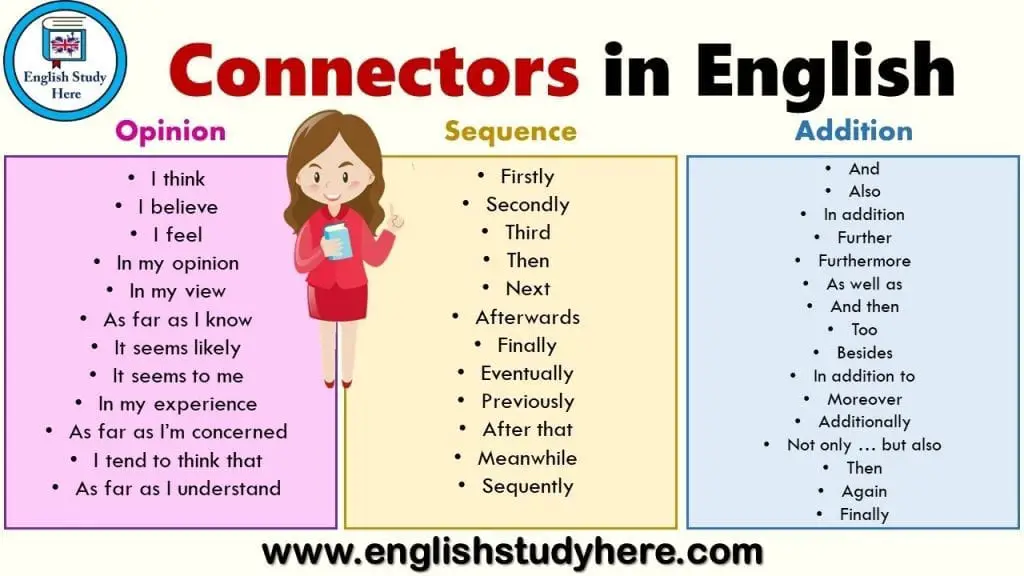
👉 Linking Words List of Sentence Connectors in English with Examples
What are connectors in English used for? Connectors or linkers can help you join two or more ideas (sentences), allowing you to have a more structured and harmonious delivery. Instead of using single sentences, you can connect them in a logical way. In this article, you'll learn about different types of connectors in English (contrast, cause, purpose, effect, addition, illustration, etc.

Connectors of Conclusion Template 03
Connectors Definition. Linker Words or Word Connectors are used to link large groups of words: phrases and sentences. You can also use them to connect paragraphs to give them coherence. Sentence connectors are usually placed at the beginning of a sentence and may be categorized as follows: 👉 CONTRAST. 1. HOWEVER
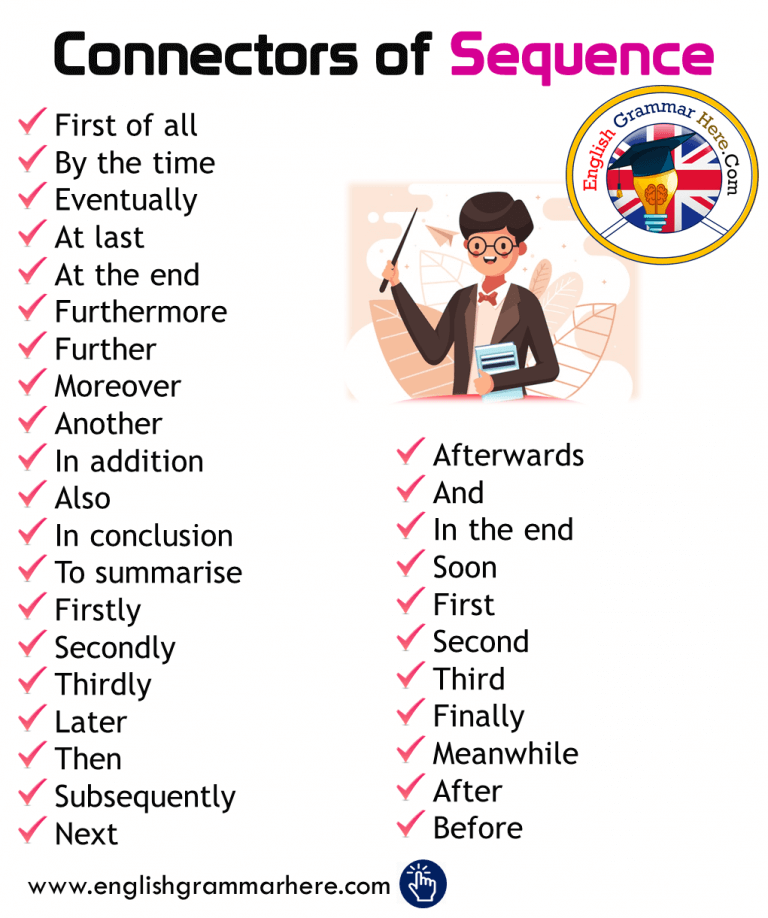
Essay Connectors in English, Connection Words for Essay English
There are a number of connectors in the English Language that can be used to help you show contrast, similarity, outcome, result, sequence and order or relevance or importance, exemplification, emphasis, explanation, dismissal, summarising or concluding, particularising, focusing, timing, and correction. Connectors are especially useful when it.

Essay CONNECTORS! Inglés Campus Virtual ORT
Conclusion Connectors. Conclusion connectors are essential for wrapping up your ideas, signaling that you're reaching the end of a particular section or argument: In conclusion: "In conclusion, our findings suggest a need for further research." To sum up/summarize: "To sum up, the main points of the report are…"
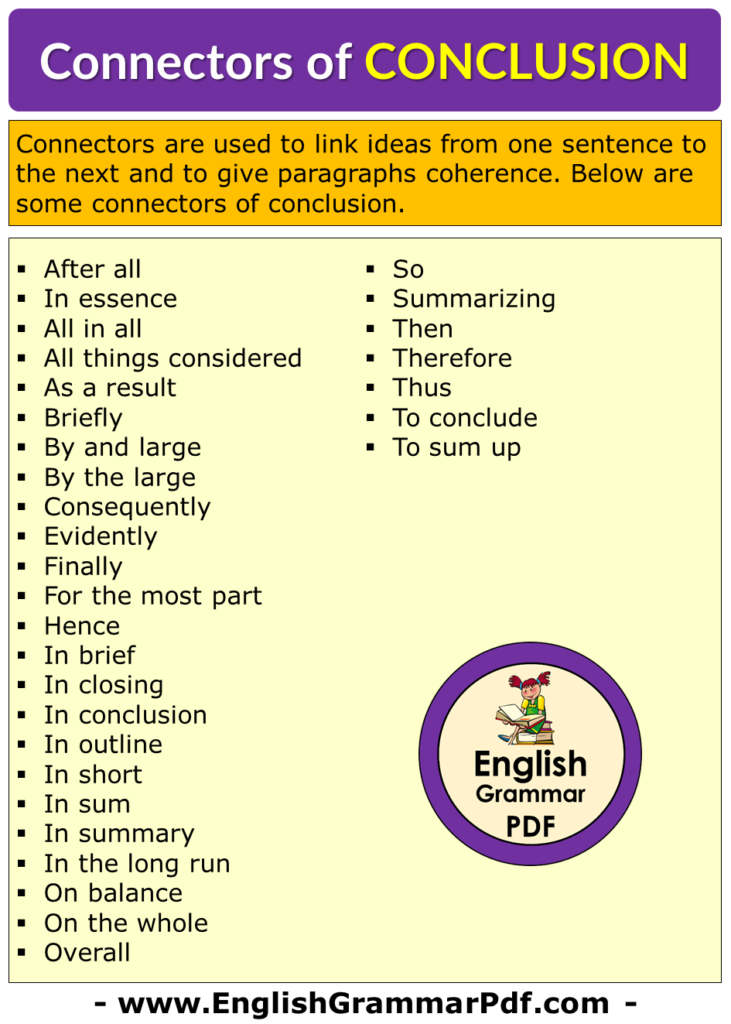
English Connectors of Conclusion List English Grammar Pdf
Connectors Of Comparison. Connectors of comparison are used to show the similarities and differences between two or more things. 75. Likewise (Formal) = In A Similar Way. John is a great cook. Likewise, Mary is skilled in the kitchen. 76. Unlike. You use "unlike" to show difference / contrast.

Connectors of Conclusion in English English Study Here
Connectors - Reasons, Contrast, Purpose, Sequence, Addition & Example, Result & Conclusion Reasons; We use connectors to give reasons. We use because to introduce a reason clause. Example; I read the book because my cousin recommended it. In writing we often use as or since with a reason clause at the beginning of a sentence. Example; As the book sold so many copies, it was reprinted twice.

Connectors Reasons, Contrast, Purpose, Sequence, Addition & Example
Conclusion. Although most connectors are used at the opening of sentences, they are also used often in the middle. Using connectors in IELTS speaking tests might help you enhance your English skills. With the use of connectors, even complicated phrases may be conveyed in a logical fashion.
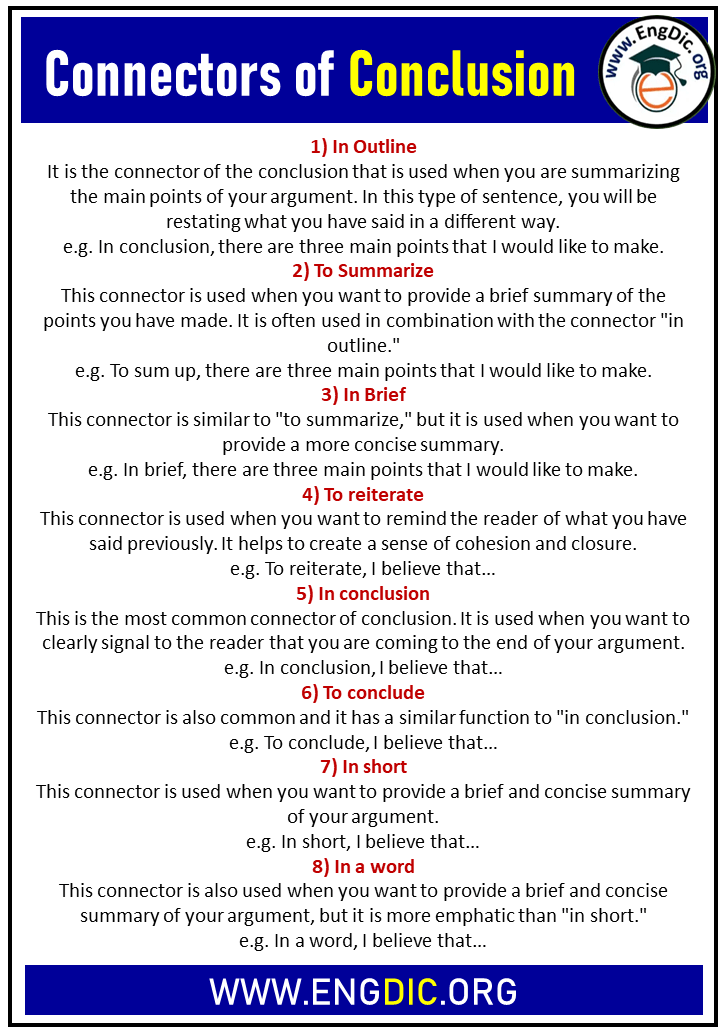
Connectors of Conclusion (Definition and Examples) EngDic
Conclusion and summary transition words. These are the transition words that bring paragraphs, arguments, and pieces of writing to a close. They can also be used to summarize and restate ideas. These transition phrases and words include: in summary. in conclusion. to conclude. in any event.

English Connectors and Example Sentences English Study Here
8. Such as ; Like. The English connectors "such as" and "like" are both used very often in writing and casual conversations. Unlike the previous two phrases, these two can also be used to list things. If you learn English, there are many career options open to you, such as teaching, journalism, advertising and so on.

Connectors of Conclusion List Lessons For English
Linking words and phrases are connectors or transitional phrases. They are also part of formal language, so you'll find them in academic writing, opinion writing, critical essays, dialectic essays, journalism, and business documents. Some linking verbs link clauses within a sentence, such as although, in case, and whatever.

Connectors of Sequence in English English Study Here Linking words
Conclusion: Finally, I consider these two themes in combination. to conclude (with), as a final point, eventually, at last, last but not least, finally, lastly: Resumption: To return to my main argument, it is clear that. to return/returning to x, to resume, at any rate: Summation: Patel (2015) comes to a similar conclusion.
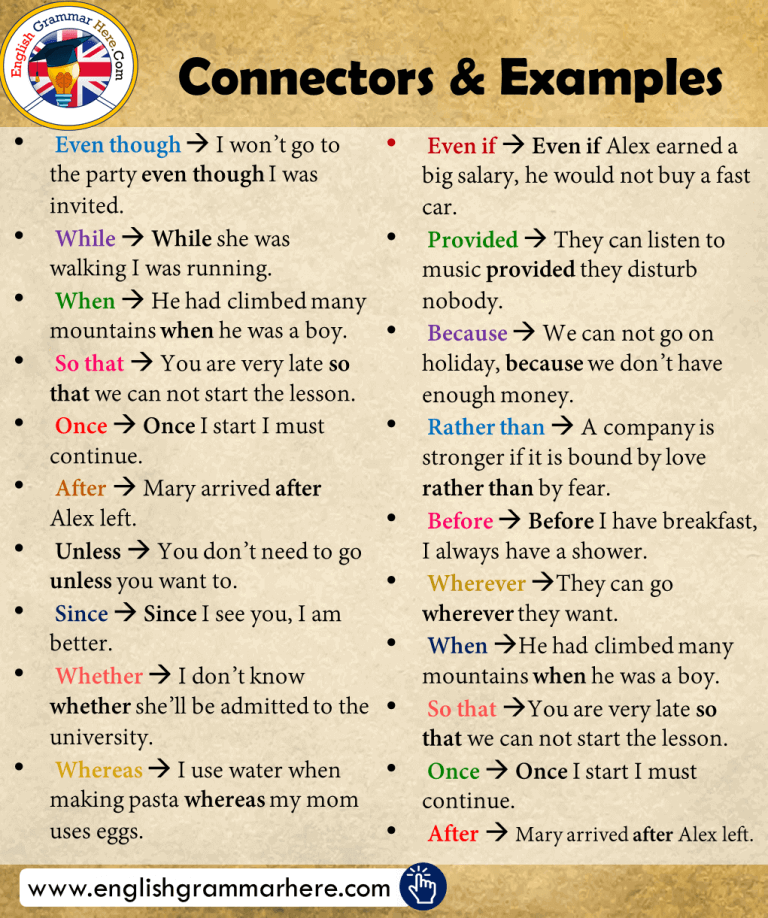
English Connectors of Conclusion List English Grammar Here
English Conjunctions / Connectors of Conclusion List; In sum In brief Briefly In short In outline In the long run For the most part After all In essence On balance Overall By the large Consequently Hence So Then Therefore Thus As a result To conclude In conclusion Finally Evidently To sum up On the whole Summarising In closing All in all By and large All things considered In summary

Connectors of Conclusion List in English English Grammar Here
In writing, a connector of conclusion (COC) is a word or phrase that signals to the reader that the writer is concluding his or her argument. A COC can be as simple as "in conclusion" or "to conclude," but it can also be more elaborate, such as "after careful consideration.". In this blog post, we'll take a closer look at.
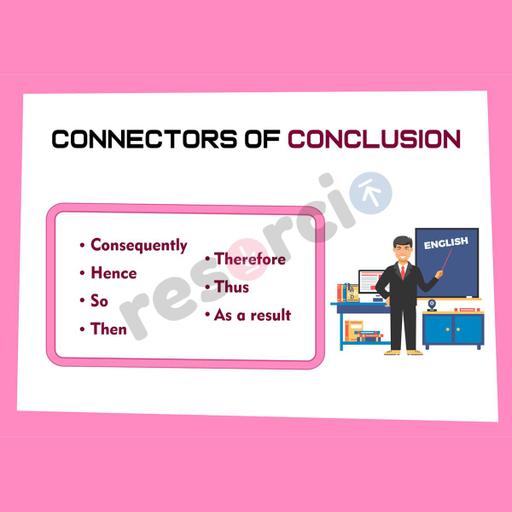
Connectors of Conclusion Template 04
1) In Outline. It is the connector of the conclusion that is used when you are summarizing the main points of your argument. In this type of sentence, you will be restating what you have said in a different way. e.g. In conclusion, there are three main points that I would like to make.
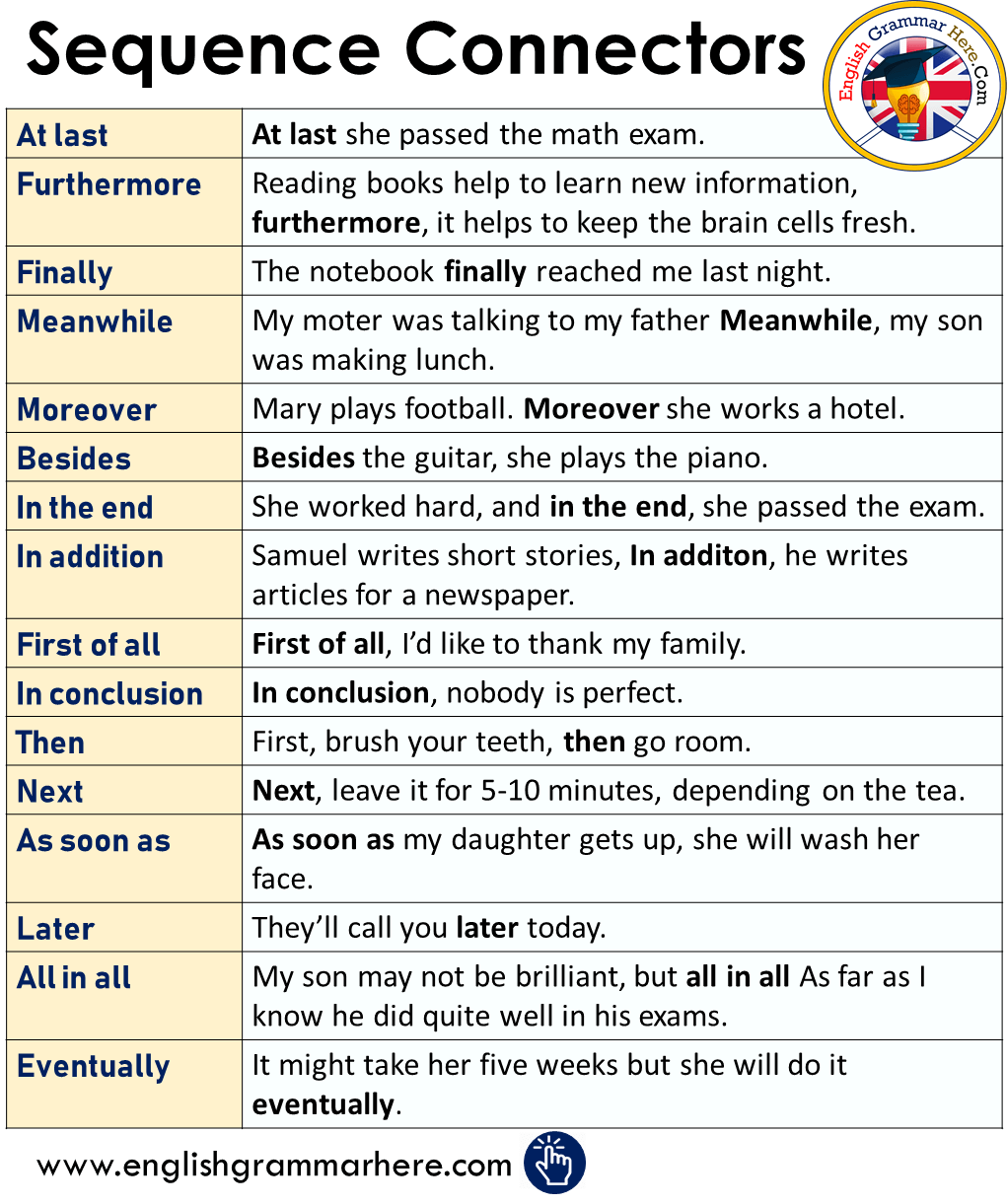
Sequence Connectors List and Example Sentences English Grammar Here
Conclusion connectors for IELTS help to summarize ideas and draw conclusions. Some examples are, "in conclusion," "to sum up," "in summary," etc. With the help of connectors, your essays automatically become more logical and structured. Common mistakes to avoid when using IELTS connectors.

16 Sequence Connectors List and Example Sentences English Study Here
Connectors of Conclusion in English; List of Conclusion conjunctions; To conclude In conclusion Finally Evidently To sum up On the whole Summarising In closing All in all By and large All things considered In summary In sum In brief Briefly In short In outline In the long run For the most part After all In essence On balance Overall By the large Consequently Hence So Then Therefore Thus As a.